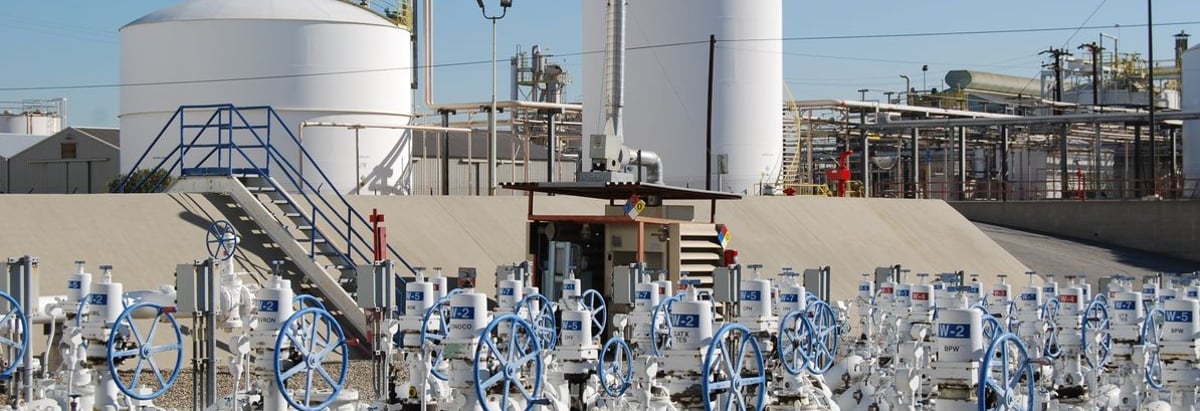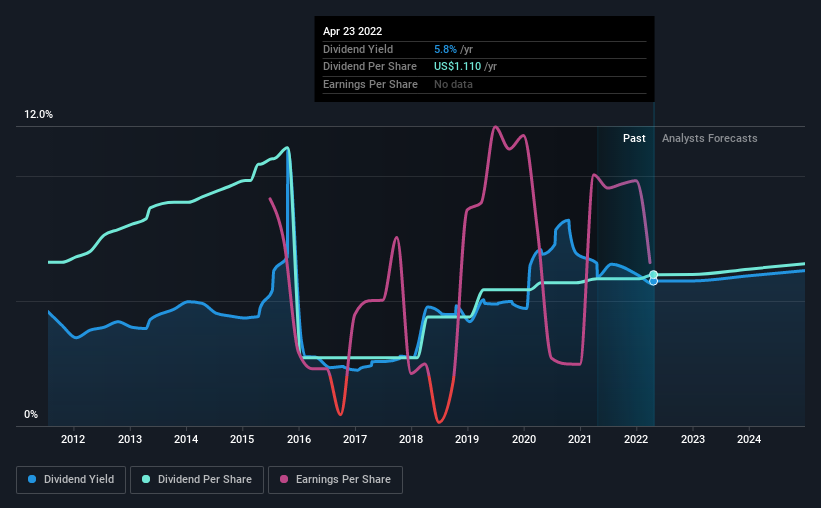
Kinder Morgan, Inc.'s (NYSE:KMI) dividend will be increasing to US$0.28 on 16th of May. This takes the dividend yield to 5.7%, which shareholders will be pleased with.
View our latest analysis for Kinder Morgan
Kinder Morgan's Payment Has Solid Earnings Coverage
While it is great to have a strong dividend yield, we should also consider whether the payment is sustainable. Prior to this announcement, the company was paying out 240% of what it was earning and 87% of cash flows. This indicates that the company could be more focused on returning cash to shareholders than reinvesting to grow the business.
Earnings per share is forecast to rise by 152.4% over the next year. If the dividend continues growing along recent trends, we estimate the payout ratio could reach 93%, which is on the higher side, but certainly still feasible.

Dividend Volatility
Although the company has a long dividend history, it has been cut at least once in the last 10 years. The first annual payment during the last 10 years was US$1.20 in 2012, and the most recent fiscal year payment was US$1.11. Payments have been decreasing at a very slow pace in this time period. Declining dividends isn't generally what we look for as they can indicate that the company is running into some challenges.
There Isn't Much Room To Grow The Dividend
With a relatively unstable dividend, it's even more important to see if earnings per share is growing. Kinder Morgan has impressed us by growing EPS at 8.5% per year over the past five years. However, the company isn't reinvesting a lot back into the business, so we would expect the growth rate to slow down somewhat in the future.
The Dividend Could Prove To Be Unreliable
In summary, while it's always good to see the dividend being raised, we don't think Kinder Morgan's payments are rock solid. Strong earnings growth means Kinder Morgan has the potential to be a good dividend stock in the future, despite the current payments being at elevated levels. This company is not in the top tier of income providing stocks.
Market movements attest to how highly valued a consistent dividend policy is compared to one which is more unpredictable. However, there are other things to consider for investors when analysing stock performance. Case in point: We've spotted 5 warning signs for Kinder Morgan (of which 1 can't be ignored!) you should know about. Looking for more high-yielding dividend ideas? Try our collection of strong dividend payers.
If you're looking to trade Kinder Morgan, open an account with the lowest-cost platform trusted by professionals, Interactive Brokers.
With clients in over 200 countries and territories, and access to 160 markets, IBKR lets you trade stocks, options, futures, forex, bonds and funds from a single integrated account.
Enjoy no hidden fees, no account minimums, and FX conversion rates as low as 0.03%, far better than what most brokers offer.
Sponsored ContentValuation is complex, but we're here to simplify it.
Discover if Kinder Morgan might be undervalued or overvalued with our detailed analysis, featuring fair value estimates, potential risks, dividends, insider trades, and its financial condition.
Access Free AnalysisHave feedback on this article? Concerned about the content? Get in touch with us directly. Alternatively, email editorial-team (at) simplywallst.com.
This article by Simply Wall St is general in nature. We provide commentary based on historical data and analyst forecasts only using an unbiased methodology and our articles are not intended to be financial advice. It does not constitute a recommendation to buy or sell any stock, and does not take account of your objectives, or your financial situation. We aim to bring you long-term focused analysis driven by fundamental data. Note that our analysis may not factor in the latest price-sensitive company announcements or qualitative material. Simply Wall St has no position in any stocks mentioned.
About NYSE:KMI
Kinder Morgan
Operates as an energy infrastructure company primarily in North America.
Proven track record low.
Similar Companies
Market Insights
Community Narratives



